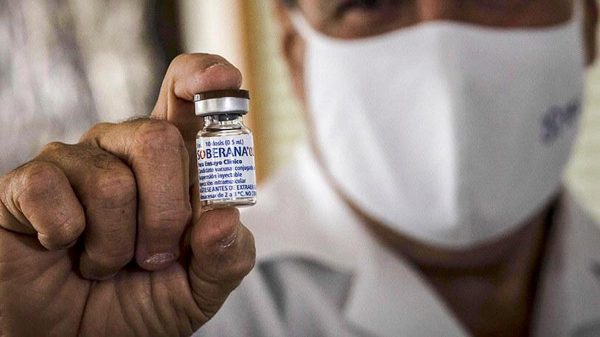Cuba’s COVID vaccines are headed to final clinical trials between March and May, and at some future date may be made available to foreigners visiting the island, says Dr. Eduardo Martínez, Díaz, President of BioCubaFarma. Dr. Martínez Díaz appeared on Cuban television alongside other Cuban biotech directors, to discuss the country’s approach to its production of coronavirus vaccines.
Cuba’s well-developed biotech sector is unique among Latin American countries and even some in the developed world, allowing not only for research and development but vaccine production. The vaccines currently in trials are named Soberana I, Soberana II, Mambisa and Abdala. All the vaccines, like others in use worldwide, begin by creating antibodies at the Receptor Binding Domains (RBD) connected to the spike protein but each is formulated slightly differently in order to evaluate maximum efficacy, said Dr. Martínez Diaz. This may also offer a more tailored approach, by creating vaccines appropriate for people with differing ages, health conditions, and now, virus variants, he added.
Soberana I and II, like almost all other vaccines being administered around the world, begin at the RBD level, where antibodies can be generated to block the virus from entering a cell. Their trials will be completed during March.
Mambisa and Abdala begin at the same level but also stimulate T-cell production, said the General Director at Cuba’s Genetic Engineering and Biotechnology Center (CIGB), Dr. Marta Ayala Ávila, who also appeared on the program. Mambisa is designed as a nasal spray while Abdala is designed for intramuscular injection. The trials for these will conclude in May.
Cuban studies revealed that the number of antibodies produced in study participants after successive doses were notably elevated after three injections compared to two. Therefore Cuba’s vaccines have been designed with successive reinforcing doses in mind, said Dr. Martínez Díaz.
New COVID Variants are Troubling
In fact, he added, the U.S. pharmaceutical company Moderna has found its vaccine to have diminished capacities against the variant from South Africa, and is considering recommending a third dose. However certain other vaccines cannot be administered more than twice.
Dr. Martínez Díaz pointed out that the mutation from South Africa is particularly troubling as it changes the structure of the RBDs where the vaccines are meant to target the virus. He pointed out however, that Cuba has created study groups to research the variants and, if necessary, incorporate its previously prepared lab antigens in updated vaccines.
Worldwide, more than 10% of infected patients go on to develop a serious case of the virus. In Cuba, however, combined protocols and medical expertise have resulted in a rate of less than 3%, said Dr. Martínez Díaz. He also noted that the mortality worldwide stands at 2%, whereas in Cuba, it is less than 1%.
To date, according to Dr. Martínez Díaz, only 108 million vaccine doses have been administered worldwide, mostly in the U.S. and China, but at the current rates, it would take 21 years to vaccinate the entire world’s population.
Despite Cuba’s ability to both design and manufacture its own vaccines, Dr. Eduardo Ojito Magaz, General Director at the Center for Molecular Immunology (CIM) pointed out that the country is hard-pressed when it comes to obtaining the necessary raw materials for vaccine production since suppliers insist that nothing produced in the sector contain any element sourced from the U.S. market. This has forced Cuba to search for internal solutions to its production problems.
Despite these challenges, Cuba has a current production capacity of 100,000 vaccine vials daily and expects to vaccinate its entire population by the end of the year.

David Urra is the chief marketing analyst at International Consulting & Representation Services/Cuba (IcarusCuba). He has produced market studies for a wide range of Latin American, European and U.S. clients exploring market entry possibilities in Cuba’s IT, tourism, ranching, pharmaceutical and manufacturing sectors.












